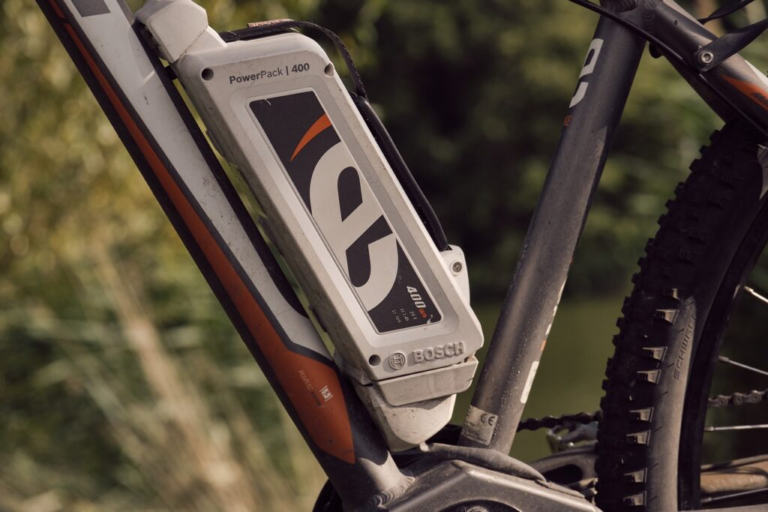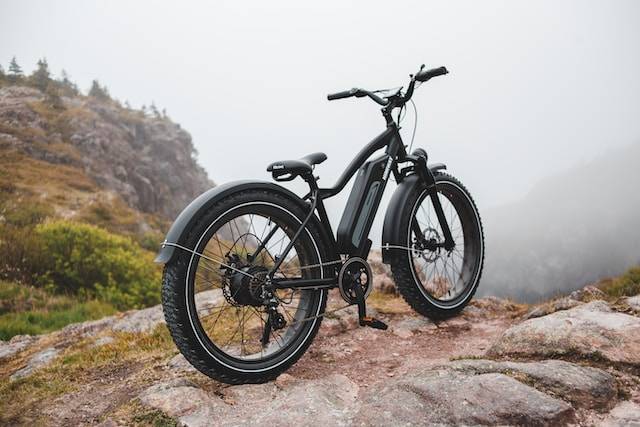How To Fix Brakes On Electric Bike
Hey there! So you’ve got yourself an electric bike, huh? That’s awesome! Electric bikes are a fantastic way to get around town, save money and reduce your carbon footprint. But here’s the thing – brakes are important! Good brakes are absolutely crucial for your safety and the safety of those around you. If your brakes on your electric bike aren’t working as they should, then it’s time to roll up your sleeves and get them fixed. Don’t worry, I’m here to guide you through the process. Get ready to be the superhero your electric bike needs, and let’s fix those brakes together!
Understanding the Brake System on an Electric Bike
Okay, before we dive into fixing the brakes, let’s take a moment to understand how the brake system on an electric bike works. Now, electric bikes usually come with two different types of brake systems – mechanical and hydraulic. The mechanical system uses cables to transmit force from the brake levers to the brake calipers. On the other hand, the hydraulic system relies on fluid-filled lines to transfer the force. Both systems have their pros and cons, but they work on the same basic principles.
Now, let’s talk about the components. The brake system consists of brake levers, calipers, pads, and rotors. When you squeeze the brake levers, they pull on the cables (in mechanical systems) or activate the hydraulic fluid (in hydraulic systems), which then applies pressure to the brake calipers. The calipers, in turn, squeeze the brake pads against the rotors, creating the friction needed to slow down or stop your electric bike. Make sense so far?
Diagnosing Brake Issues
Alright, let’s get down to business. Before we start fixing anything, we need to diagnose the problem. So, what are some common brake issues you might encounter? Well, brakes that squeak, grind, or have reduced performance are all signs that something is amiss. But how can you pinpoint the issue?
First off, perform a visual inspection of your brake system. Check if the brake pads are worn down, damaged, or misaligned. Look for any signs of contamination, such as oil or dirt on the brake pads or rotors. Next, give your brakes a test ride in a safe area. Pay attention to any unusual noises, vibrations, or a lack of stopping power. By combining a visual inspection with a real-life test, you can get a better idea of what’s causing the problem.
Gathering the Necessary Tools and Supplies
Now that you have an idea of what’s wrong with your brakes, it’s time to gather the tools and supplies you’ll need for the job. Trust me, having the right tools can make a world of difference when it comes to fixing your brakes efficiently.
So, what will you need? First and foremost, you’ll need a set of basic bike tools, such as hex wrenches, screwdrivers, and pliers. Additionally, you’ll need specific tools for brake maintenance, like a piston press or a brake pad spreader, depending on your brake system. Oh, and don’t forget about the supplies – you’ll need new brake pads, cleaning agents, and lubricants. Remember, using quality tools and supplies will make the whole process much smoother.
Step-by-Step Guide to Fixing Brakes on an Electric Bike
Alright, are you ready to get your hands dirty? Let’s dive into the step-by-step guide to fixing your electric bike brakes. Hold on to your handlebars!
Inspecting the Brake Pads
First up, let’s inspect those brake pads! If you notice they’re worn down or damaged, it’s time for a replacement. Start by removing the wheel from your electric bike – this will give you better access to the brake pads. Once the wheel is off, take a good look at the brake pads. Are they worn down to the indicator line? If so, it’s definitely time for new ones.
Removing the Old Brake Pads
With the wheel off, it’s time to remove the old brake pads. Depending on your brake system, you might need to undo a retaining pin or slide the pads out of the calipers. Take note of how the old pads are positioned, as you’ll need to install the new ones in the same way.
Installing New Brake Pads
Now for the fun part – installing those shiny new brake pads. Start by cleaning the calipers and rotors with a suitable cleaning agent to remove any dirt or oil. Then, position the new brake pads in the calipers, making sure they’re aligned correctly with the rotor. Sometimes, you might need to adjust the position using a brake pad spreader or even your fingers.
Adjusting the Brake Calipers
Alright, the new brake pads are in, but we’re not done just yet. Next up, let’s make sure those brake calipers are properly adjusted. Start by squeezing the brake lever and observing how the pads make contact with the rotor. You want the pads to contact the rotor evenly on both sides. If they don’t, you’ll need to adjust the calipers.
Aligning the Brake Rotors
The brake pads are in place, and the calipers are adjusted – what’s next? Well, it’s time to make sure those brake rotors are aligned properly. Sometimes, the rotors can become slightly warped or misaligned, causing poor braking performance. To fix this, you’ll need to gently bend the rotor back into shape. Just be careful not to apply too much force – we want to avoid damaging the rotor.
Bleeding the Brake System (if hydraulic)
If you have a hydraulic brake system, it’s important to bleed the brakes to ensure optimal performance. Over time, air bubbles can get trapped in the fluid lines, causing a spongy feel or reduced braking power. Bleeding the system will remove any air and ensure that your brakes function at their best.
To bleed the brakes, you’ll need a bleed kit specific to your brake system. Follow the manufacturer’s instructions carefully, as the process can vary between different brake models. Generally, it involves attaching a bleed hose to the brake caliper, purging the air from the system, and then refilling with fresh brake fluid. Bleeding brakes may seem intimidating at first, but with a little patience and attention to detail, you’ll have it mastered in no time.
Reassembling the Brakes
With all the necessary fixes and adjustments made, it’s time to put everything back together. Start by reattaching the wheel to the electric bike, making sure it’s secured properly. Double-check the brake pads, calipers, and rotors to ensure they’re in the correct positions and aligned correctly. Give the brake levers a few squeezes to make sure they engage smoothly and that there’s consistent contact between the pads and rotors.
Once everything is back in place and functioning correctly, it’s a good idea to take your electric bike for a test ride in a safe area. Slowly build up your speed and test out the brakes, paying attention to any unusual sounds, vibrations, or inconsistencies. If everything feels good, congratulations – you’ve successfully fixed the brakes on your electric bike!
Advanced Brake Repair Techniques (if applicable)
Sometimes, more complex brake issues may arise that require advanced repair techniques. If you encounter brake problems beyond what we’ve covered in this guide, it might be time to seek professional help. Brake line replacements or upgrading the brake system for enhanced performance are tasks that may require specialized knowledge and tools. Don’t hesitate to reach out to a qualified bike mechanic if you’re uncertain about tackling these advanced repairs.
Can the Electric Bike Conversion Affect the Brakes?
When considering electric bike conversion options, it’s essential to evaluate how it can affect the brakes. Adding a motor and battery may increase the weight and speed of the bike, impacting the performance and wear of the brakes. It’s important to choose a conversion kit that includes upgraded brake components for safety.
Brake Maintenance and Prevention Tips
Now that you’ve fixed your electric bike’s brakes, you’ll want to keep them in top-notch condition to ensure long-term performance and safety. Here are a few maintenance and prevention tips to keep your brakes in tip-top shape:
Cleaning and Lubricating the Brake Components
Regularly clean your brake pads, rotors, and calipers to remove any debris, oil, or dirt that can interfere with proper braking. Use a suitable cleaning agent and a soft brush or cloth to gently scrub away any buildup. Additionally, lubricate critical parts of the brake system, such as pivot points and cables. Be sure to use bicycle-specific lubricants and avoid applying lubricant to the brake pads or rotors, as this can compromise braking performance.
Regular Inspections and Adjustment
Make it a habit to give your electric bike’s brake system a thorough inspection on a regular basis. Look for signs of wear, damage, or misalignment. Check the brake pads’ thickness and replace them as needed. Also, ensure that the brake levers have the right amount of reach and adjust them if necessary. By catching potential problems early on, you can prevent major brake issues down the line.
Recommended Maintenance Schedule for Electric Bike Brakes
While maintenance needs can vary depending on factors like riding conditions and frequency, having a general schedule can help you stay on top of brake maintenance. Here’s a recommended guideline:
- Every 100 miles: Inspect brake pads for wear and debris.
- Every 500 miles: Clean brake components and inspect rotors.
- Every 1,000 miles: Replace brake cables and housing (if necessary).
- Annually: Bleed hydraulic brake system (if applicable) and inspect brake lines for leaks or damage.
By following a regular maintenance schedule, you’ll not only ensure the longevity of your electric bike’s brake system but also maintain optimal braking performance for a safe and enjoyable riding experience.
We’ve covered a lot of ground in this guide, and you should now have the knowledge and confidence to fix the brakes on your electric bike. Remember, brakes are a vital part of your safety equipment, so don’t shy away from regular maintenance and repairs. Take the time to inspect, clean, and adjust your brakes as needed, as this will help keep you safe on the road.
Ride with confidence, my friend, and enjoy the smooth and reliable braking of your newly repaired electric bike. Stay tuned for more exciting biking adventures and maintenance tips!
Upgrading Your Brake System for Enhanced Performance
If you’re an avid cyclist or looking to take your electric bike adventures to the next level, upgrading your brake system can greatly enhance your riding experience. While this step is optional, it’s worth considering if you feel that your current brakes aren’t meeting your needs or if you’re simply interested in exploring the possibilities of high-performance braking.
Before diving into brake system upgrades, it’s important to note that this is a more advanced modification and might require professional help if you’re not confident in your mechanical skills. That being said, here are some potential brake upgrades to consider:
High-End Brake Calipers and Pads
Replacing your stock brake calipers with high-end ones can offer improvements in braking power, modulation, and overall performance. Brands like Shimano, SRAM, and Magura are known for their quality brake calipers, and they offer various models to suit different riding styles and preferences.
Alongside new calipers, upgrading to premium brake pads can also make a difference. Companies like SwissStop and Kool Stop produce brake pads that provide excellent stopping power, better heat dissipation, and enhanced durability, resulting in improved braking performance.
Larger Rotors
If you consistently ride in demanding conditions or frequently encounter steep descents, upgrading to larger brake rotors can improve brake performance and heat management. Larger rotors offer increased surface area, which results in better heat dissipation and improved stopping power. However, keep in mind that upgrading to larger rotors might require adaptations to your bike frame or fork to accommodate the larger size.
Hydraulic Brake Conversion
If your electric bike currently has mechanical brakes, converting them to hydraulic disc brakes can be a game-changer. Hydraulic brakes provide enhanced modulation, better heat management, and generally require less maintenance compared to mechanical systems. However, this upgrade typically involves replacing brake levers, calipers, and potentially the brake lines, as hydraulic brakes operate on fluid pressure instead of cables.
When considering a hydraulic brake conversion, weigh the cost of the conversion against the potential benefits to ensure it aligns with your needs and budget.
Electronic Brake Systems
For those seeking the ultimate in high-performance and futuristic technology, electronic brake systems like Shimano Di2 or SRAM eTap AXS offer a cutting-edge experience. Electronic brakes utilize electric signals to deliver precise braking control, offering quicker response times and customizable lever feel. These systems also often integrate seamlessly with electronic shifting systems for a truly integrated biking experience.
It’s important to note that electronic brake systems can be more expensive and complex to set up and maintain. They might not be necessary for everyday riders, but they can be a great choice for competitive cyclists or enthusiasts who crave the latest and greatest tech.
Remember, upgrading your brake system is an individual choice and depends on your personal preferences, riding style, and budget. If you’re unsure about any modifications or need assistance, consult with a professional bike technician to ensure compatibility and proper installation.
Congratulations, my friend! You’ve made it through our guide on how to fix the brakes on your electric bike. By following the step-by-step process, diagnosing common issues, and performing regular maintenance, you’ve taken a big step towards ensuring your safety and riding enjoyment.
Remember, maintaining well-functioning brakes is essential for safe and confident riding. Never underestimate the power of a properly functioning brake system on an electric bike. So, keep an eye on your brake pads, clean and lubricate your components regularly, and don’t hesitate to fix any issues that arise.
And if you’re feeling up for it, consider upgrading your brake system for enhanced performance. Whether it’s high-end brake calipers, larger rotors, a hydraulic brake conversion, or even electronic brake systems, these upgrades can take your electric bike to a whole new level.
Now go out there, enjoy the freedom of riding your electric bike, and remember to always brake with confidence. Stay safe, have fun, and I’ll see you on the open road!
Kristina Grant is not just an enthusiast but a true authority on electric bikes. Nestled in the coastal beauty of Virginia, Kristina has found the perfect backdrop for her passion for electric biking. As a dedicated wife and homeschooling mom, her life revolves around family, faith, and the thrill of adventure.
Originally hailing from Ohio, Kristina's journey with electric bikes began as a curiosity and quickly evolved into a deep expertise. Her blog is a testament to her love for electric biking, combining her fascination for eco-friendly transportation with her coastal lifestyle.
When she's not cruising the beach on her electric bike, you'll find Kristina indulging in her other loves: long walks along the shore, getting lost in a good book, and cherishing moments with her loved ones. With a heart as big as her love for animals, especially cats, Kristina brings a unique perspective to the electric bike world, grounded in her strong faith in God and her dedication to a sustainable lifestyle.
Through her blog, Kristina shares her extensive knowledge of electric bikes, offering valuable insights, tips, and recommendations to fellow enthusiasts. Whether you're a seasoned rider or a newcomer to the electric bike scene, Kristina's blog is your go-to source for all things electric biking, fueled by her passion, expertise, and the scenic beauty of coastal Virginia.






